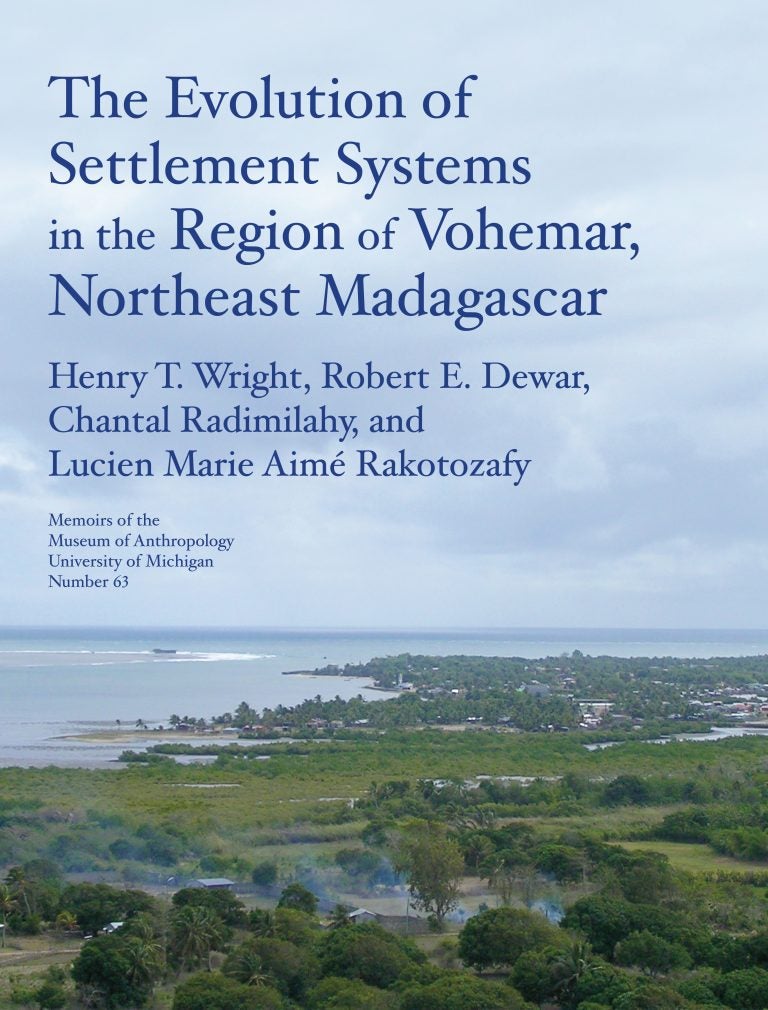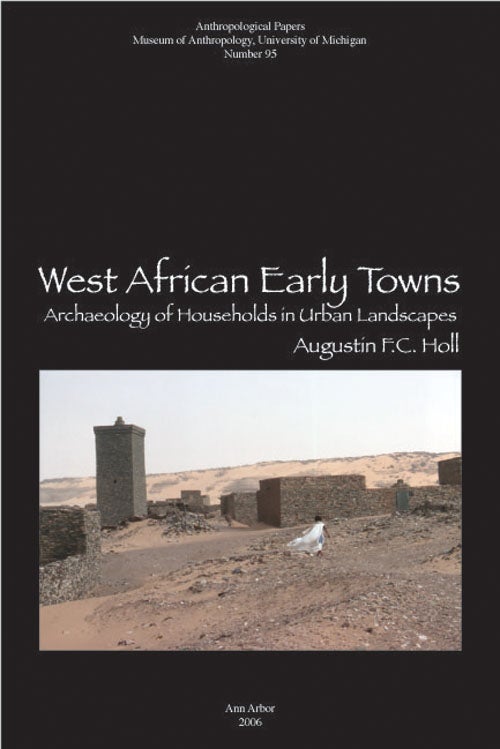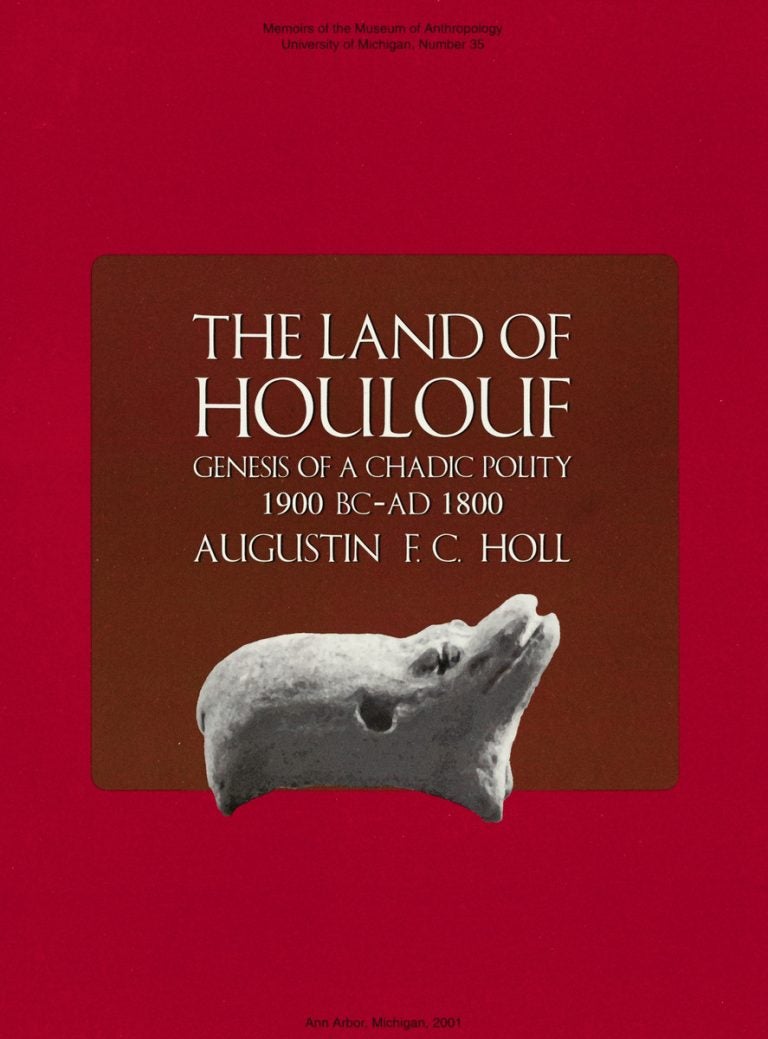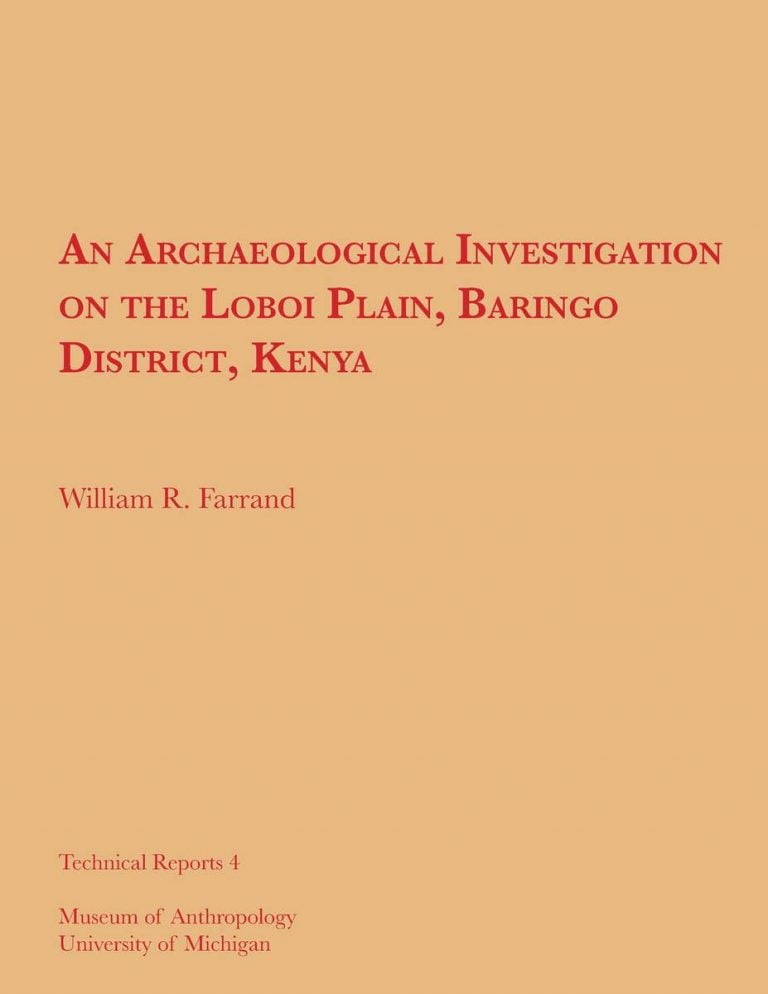In four seasons of intensive archaeological survey in the Vohemar region of Madagascar, researchers found evidence of many settlements dating to different periods: a large port site dating to the fourteenth century (the same era as large cemetery nearby); early estuarine villages of the eighth to tenth centuries; and a rock shelter with microlithic tools.
Category: Africa
Early State Formation in Central Madagascar: An Archaeological Survey of Western Avaradrano
Henry T. Wright
M 43
Distant Madagascar, the island at the end of the world, has many lessons to teach. The ancestors of the Malagasy people established themselves at least 1500 years ago. Again and again since their arrival, the Malagasy have created new kinds of political communities. This study concerns archaeological survey and excavations in the indigenous state of Imerina in the central highlands.
West African Early Towns: Archaeology of Households in Urban Landscapes
Augustin F.C. Holl
AP 95
West African Awdaghost (Tegdaoust) emerged as a vital medieval trade center before its decline in the sixteenth century AD. Extensively excavated and accompanied by a large body of published material, Awdaghost provides a unique opportunity for the application of household archaeology to a West African settlement.
The Land of Houlouf: Genesis of a Chadic Polity, 1900 BC–AD 1800
Augustin F.C. Holl
M 35
A thorough review of the important archaeological sites on the Chadian Plain, including Houlouf, which the author excavated 1980–1990.
The Behavioral Ecology of Efe Pygmy Men in the Ituri Forest, Zaire
Robert C. Bailey
AP 86
Robert C. Bailey reports on his observations of sixteen Efe Pygmy men in northeastern Zaire. Bailey lived and worked with the men and their families in the northern Ituri Forest from March 1980 to January 1982—his research was part of a multidisciplinary project called the Ituri Project. Bailey presents data on food production, subsistence behaviors, hunting techniques, relationships between hunters and village dwellers, and other aspects of the Efe society. Foreword by John D. Speth.
The Ait Ayash of the High Moulouya Plain: Rural Social Organization in Morocco
John Chiapuris
AP 69
Author John Chiapuris lived in Morocco for sixteen months while doing fieldwork with the Ait Ayash, a Berber-speaking community of irrigation agriculturalists occupying the Ansegmir Valley in the High Moulouya plain. In the first part of this study, Chiapuris explains the ethnohistorial background and sociopolitical organization of the Ait Ayash. In the second section, he focuses on the regional setting and the changes initiated by the French Protectorate in 1912. In the third, he analyzes domestic production, household organization, and marriage patterns in the contemporary period.
An Archaeological Investigation on the Loboi Plain, Baringo District, Kenya
William R. Farrand, Richard W. Redding, Milford H. Wolpoff, and Henry T. Wright, III
T 4
In 1973, researchers from the University of Michigan conducted a survey in the Loboi area, north of Lake Bogoria (Lake Hannington) in west Kenya, north of Nairobi. The goal of the project was to record archaeological remains in the area. In 1965, Mary Leakey had noted the presence of stone tools and faunal remains in Loboi, and her son Richard Leakey, director of the National Museums of Kenya, suggested the area should be further studied.
In addition to the intensive survey, the researchers excavated seven small test units at five sites and recovered archaeological materials.
The Ait Ndhir of Morocco: A Study of the Social Transformation of a Berber Tribe
Amal Rassam Vinogradov
AP 55
This work is an enquiry into the nature of tribalism in Morocco and its historical relationship to the central government. Employing the Air Ndhir as an example, this study attempts to establish a model for the traditional sociopolitical organization of a semi-nomadic Berber tribe of the Middle Atlas and examine the dynamics of the makhzan-tribal symbiosis during the latter half of the 19th century.
Where Women Work: A Study of Yoruba Women in the Marketplace and in the Home
Niara Sudarkasa
AP 53
Niara Sudarkasa reports on Yoruba women and their role as traders in Nigeria’s marketing system. During Sudarkasa’s 15-month fieldwork in western Nigeria, she spoke with hundreds of traders, men and women, in order to understand the Yoruba markets, the division of labor, the difference between urban and rural communities in the region, residence and kinship, and other complexities of Yoruba society.
The Occupations of Migrants in Ghana
Polly Hill
AP 42
In this study, which is statistically based on the 1960 Ghana population census, author Polly Hill attempts to show that economically motivated migration takes a much greater variety of occupational forms than is conventionally supposed. Hill reports on the occupations, geographical distribution, and urbanization of Ghana’s migrant population, and supplies notes on 34 migratory ethic groups.
Oasis and Casbah: Algerian Culture and Personality in Change
Horace M. Miner and George De Vos
AP 15
Horace M. Miner and George De Vos report the results of a nine-month cultural study in Algeria.











